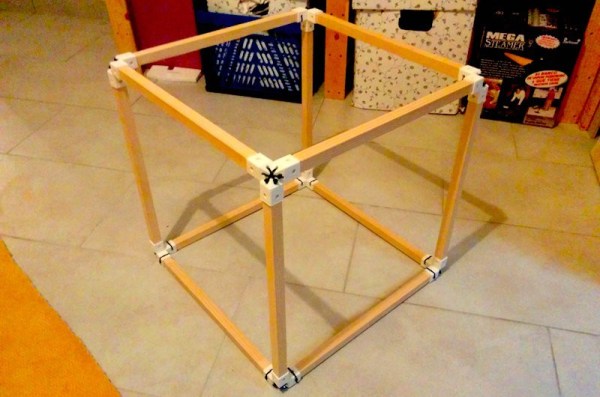3D printing is great for a lot of things: prototyping complex designs, replacing broken parts, and creating unique pencil holders to show your coworkers how zany you are. Unfortunately, 3D printing is pretty awful for creating large objects – it’s simply too inefficient. Not to mention, the small size of most consumer 3D printers is very limiting (even if you were willing to run a single print for days). The standard solution to this problem is to use off-the-shelf material, with only specialized parts being printed. But, for simple structures, designing those specialized parts is an unnecessary time sink. [Nurgak] has created a solution for this with a clever “Universal Vertex Module,” designed to mate off-the-shelf rods at the 90-degree angles that most people use.
The ingenuity of the design is in its simplicity: one side fits over the structural material (dowels, aluminum extrusions, etc.), and the other side is a four-sided pyramid. The pyramid shape allows two vertices to mate at 90-degree angles, and holes allow them to be held together with the zip ties that already litter the bottom of your toolbox.
[Nurgak’s] design is parametric, so it can be easily configured for your needs. The size of the vertices can be scaled for your particular project, and the opening can be adjusted to fit whatever material you’re using. It should work just as well for drinking straws as it does for aluminum extrusions.



















